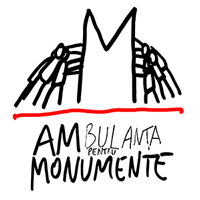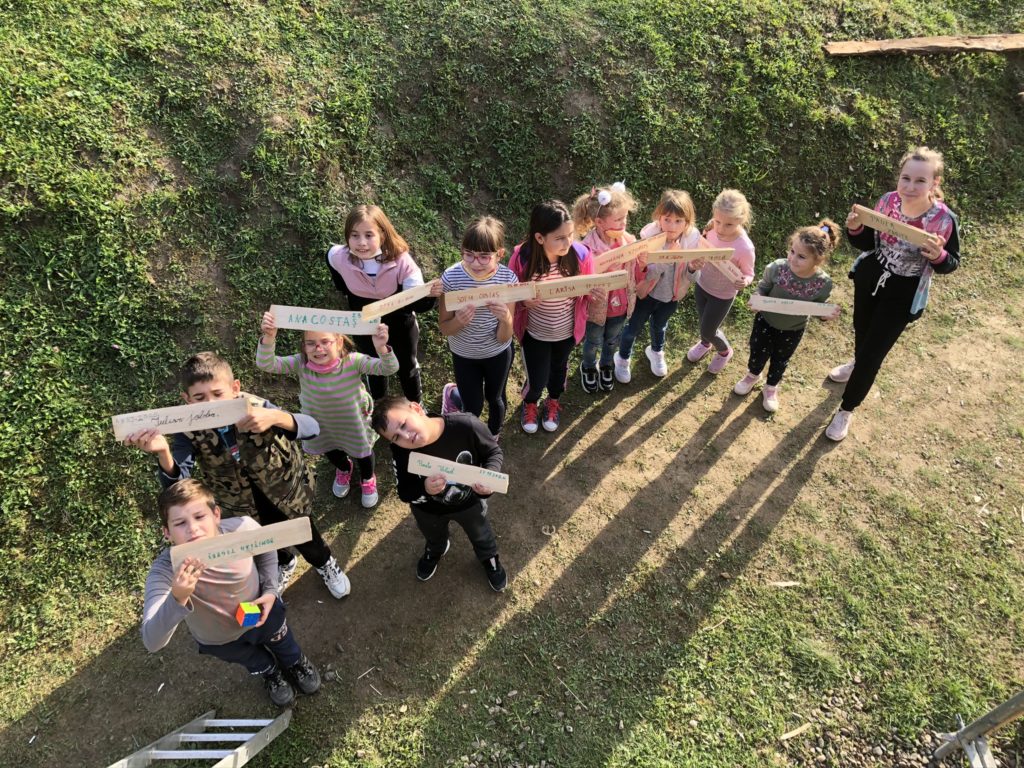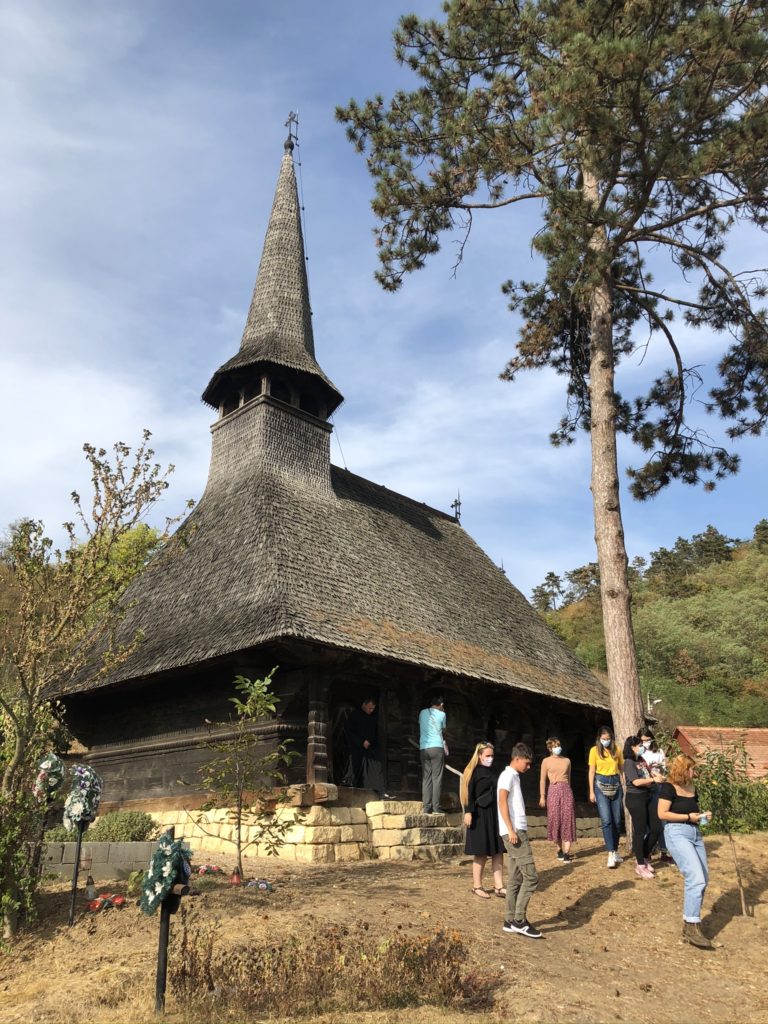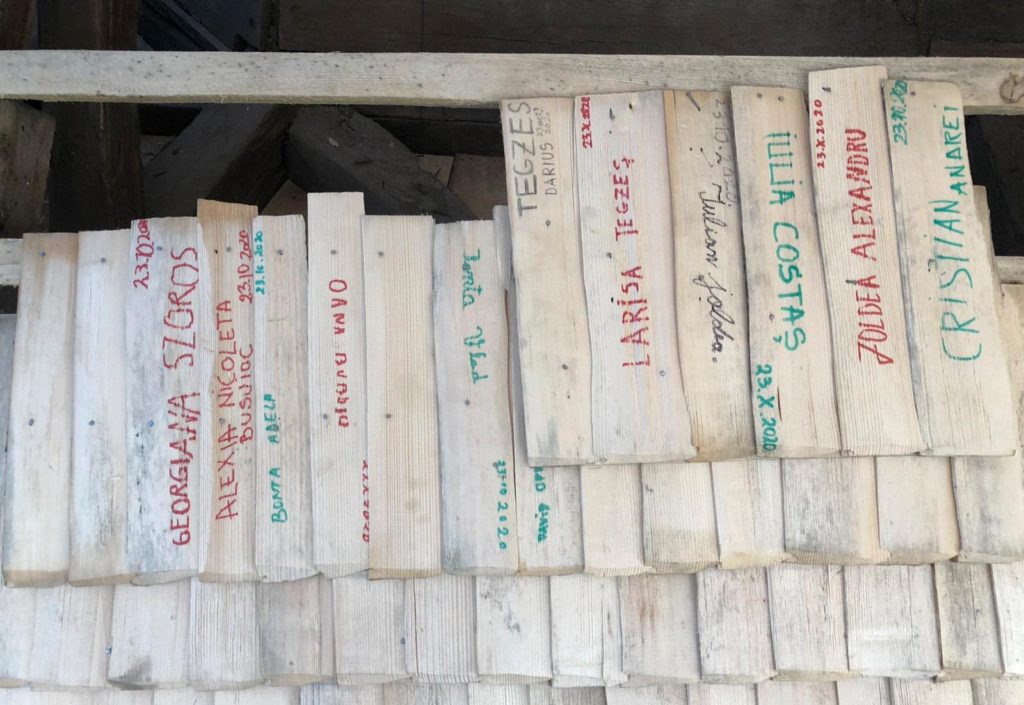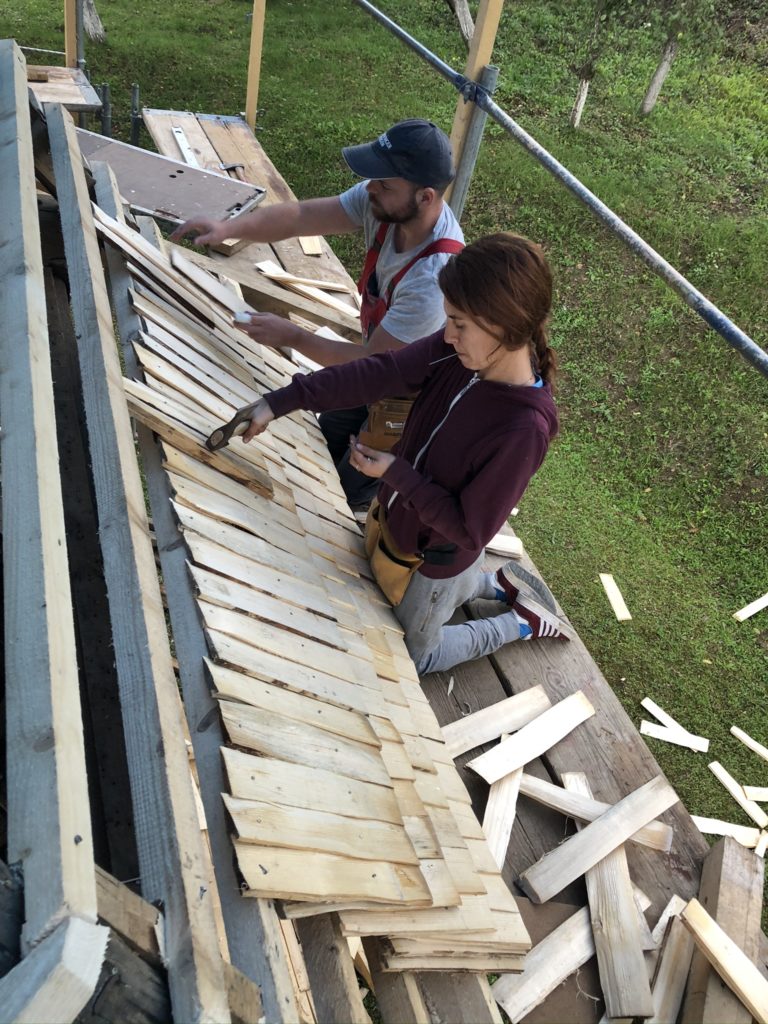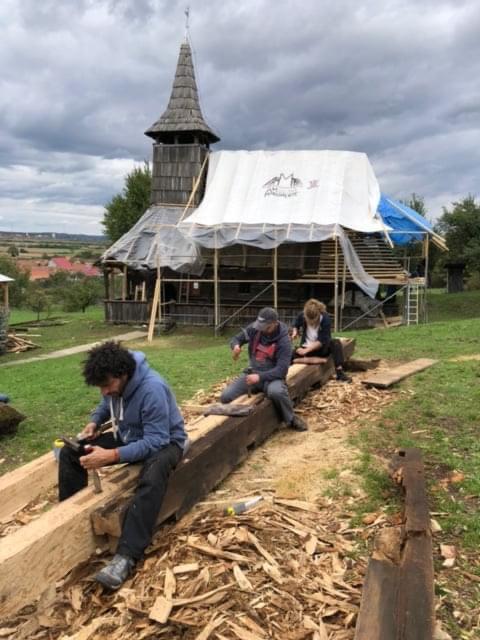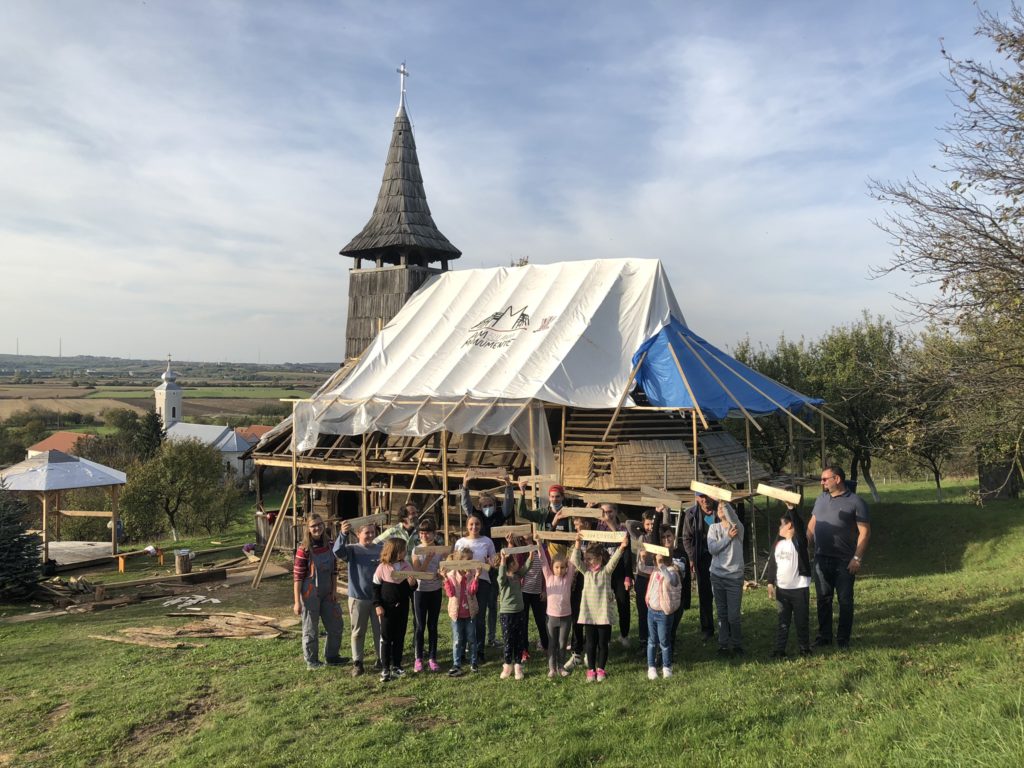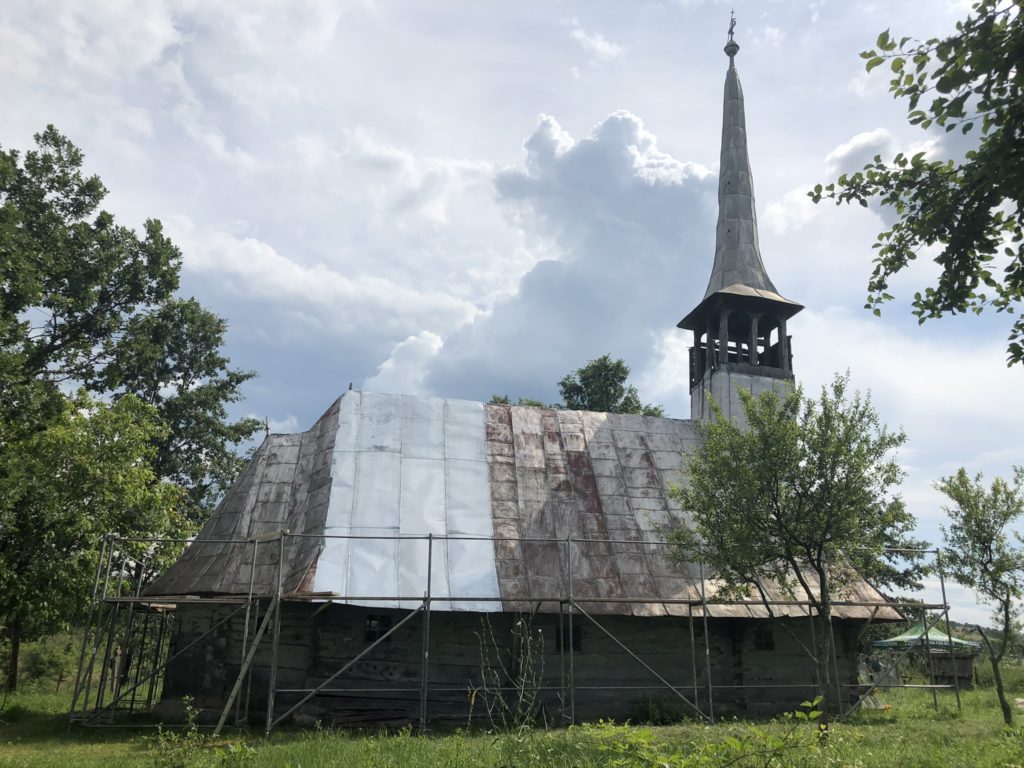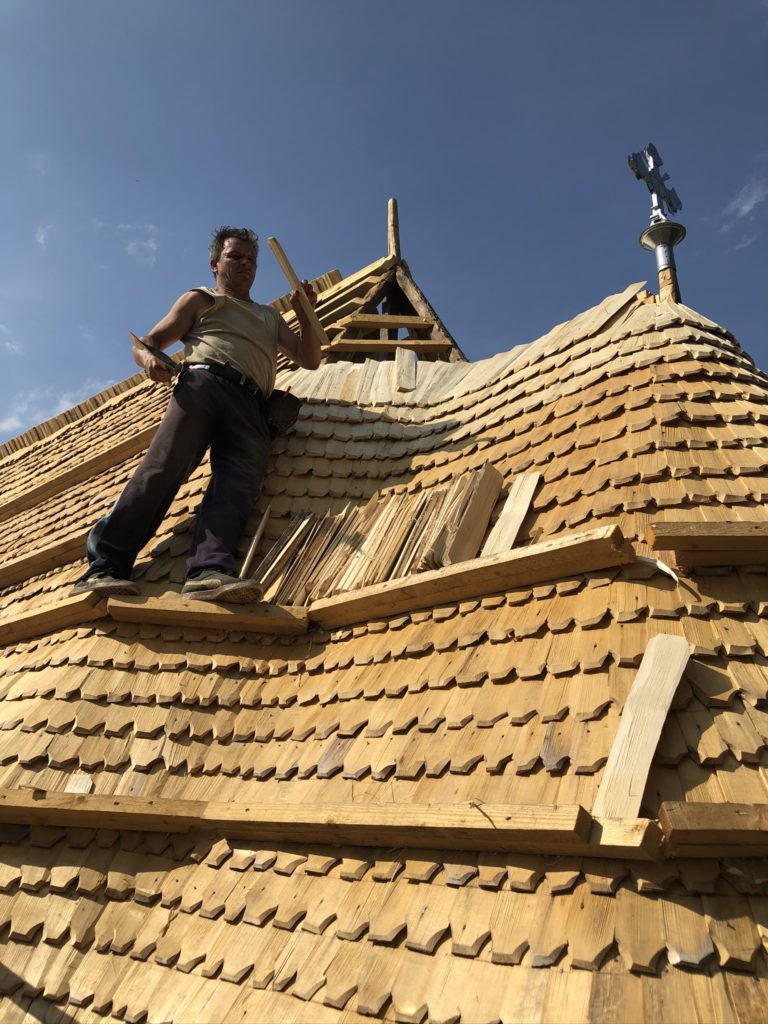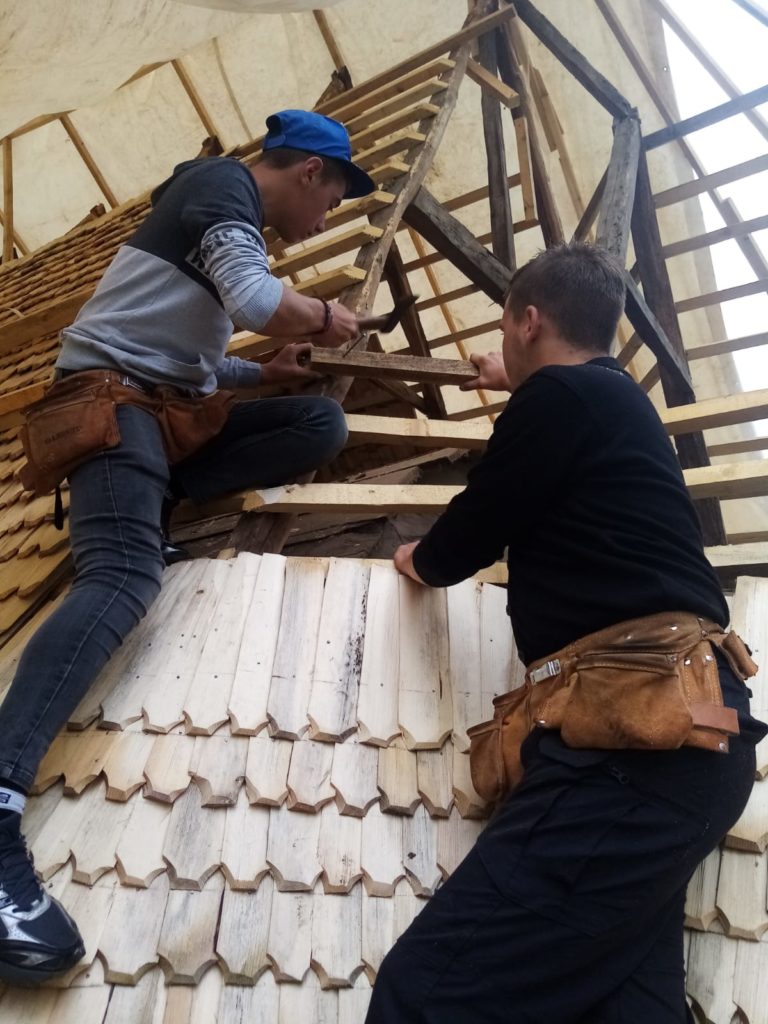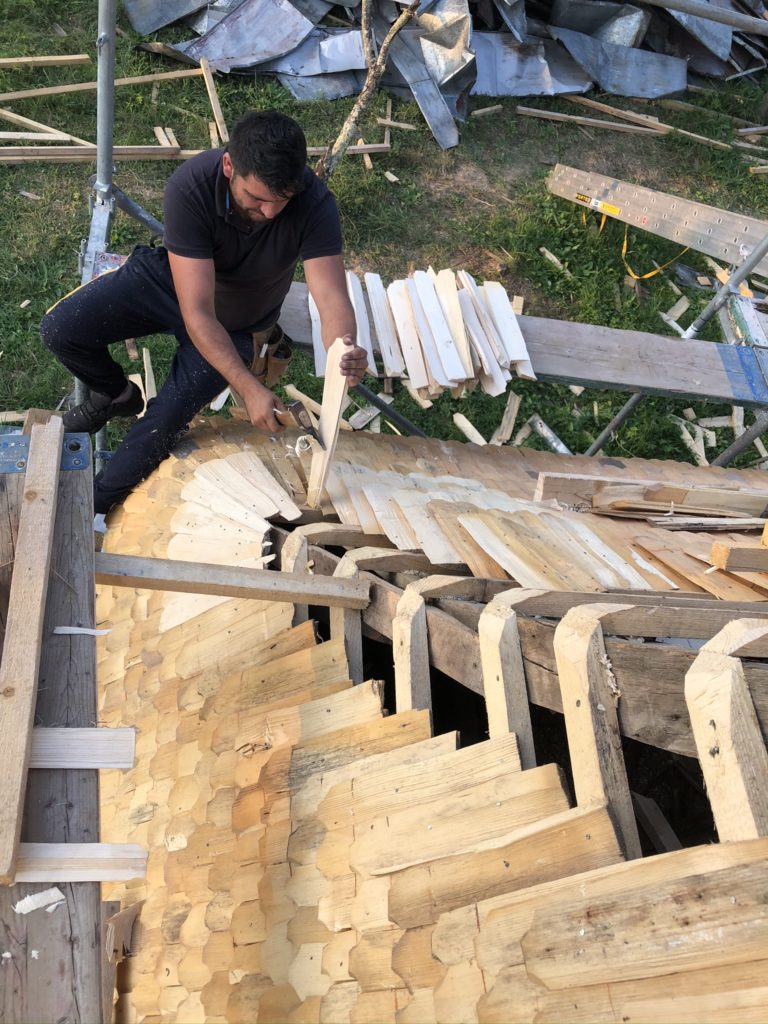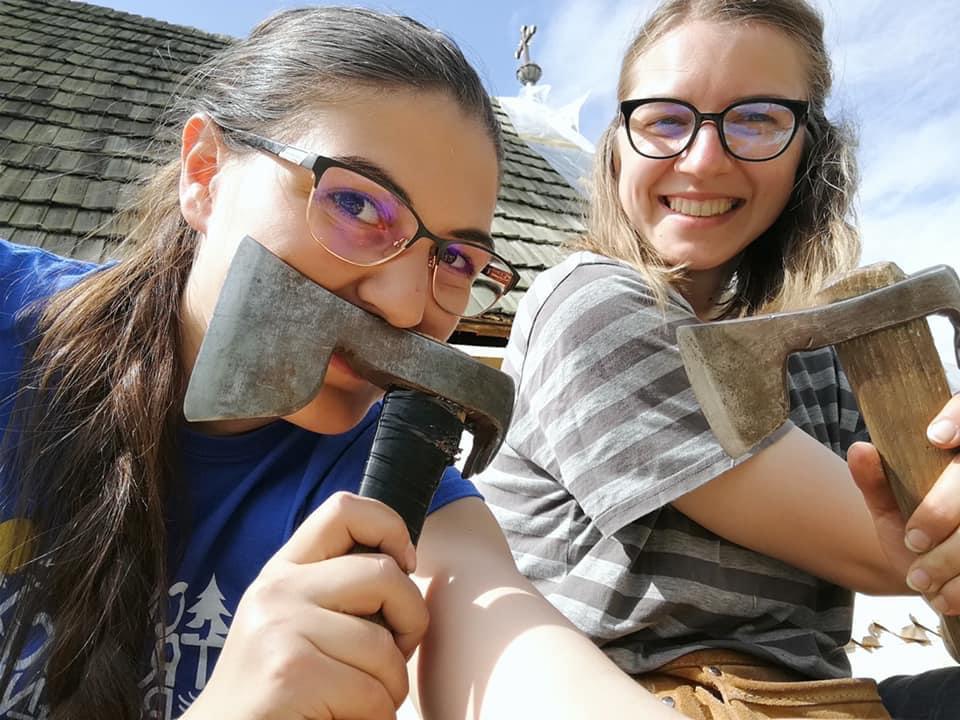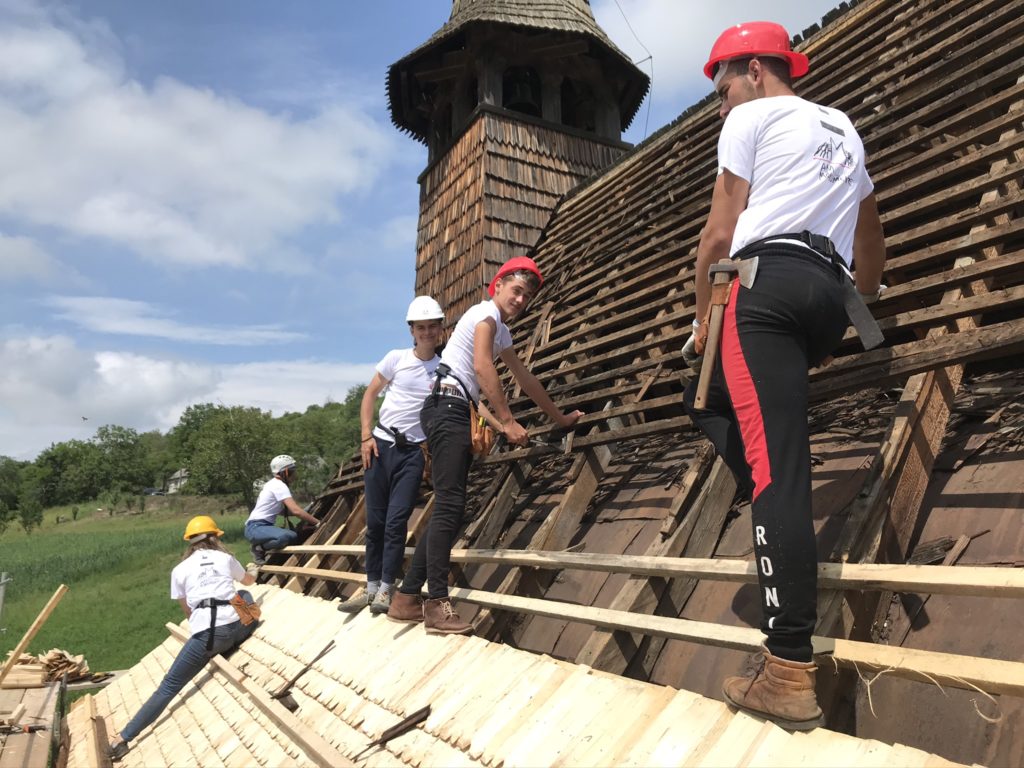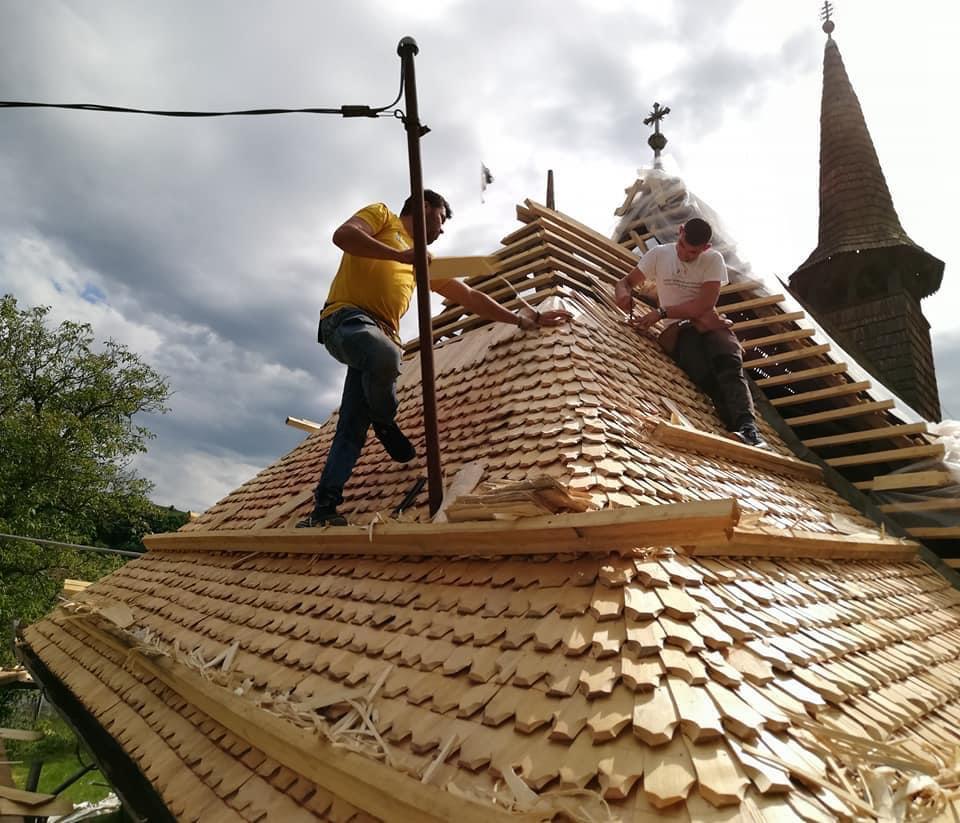Category: Sălaj
Brusturi, „St. Arhangheli Mihail și Gavril” Wooden Church
GENERAL PRESENTATION The first research dedicated to the Brusturi wooden church took place in the interwar period, during the extensive investigative actions conducted by Professor Leontin Ghergariu on the Sălaj county wooden churches. Currently, the Brusturi wooden church is on the list of historical monuments (LMI) under code: SJ-II-mA-050 261. The upper border of the […]
Veronica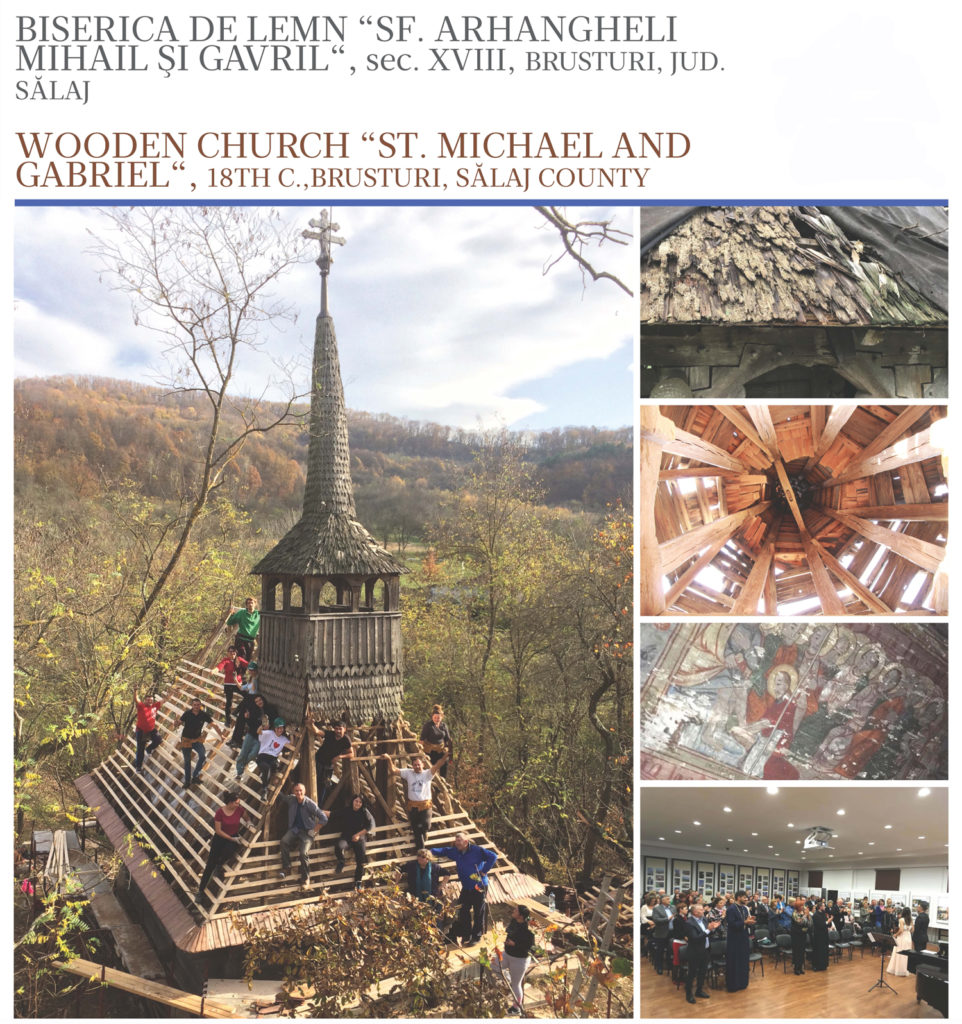


GENERAL PRESENTATION
The first research dedicated to the Brusturi wooden church took place in the interwar period, during the extensive investigative actions conducted by
Professor Leontin Ghergariu on the Sălaj county wooden churches. Currently, the Brusturi wooden church is on the list of historical monuments (LMI)
under code: SJ-II-mA-050 261. The upper border of the door has an inscription dating back the church that could not be fully deciphered. The difficulty
to read the inscription was mentioned by several researchers. For example, Leontin Ghergariu stated that the front door is carved and that it “but can
not decipher the inscription” and the late ‘70s, Ioana Cristache-Panait researcher noted that from the inscription about the building of the objective,
missing by changing the upper surround of entrance door, was left only its end: “Valeat 1701”.
THE STATE BEFORE THE INTERVENTION
During the evaluation of the building, it was found that the conservation status of the rafters was relatively good, but covering and laths were in
advanced state of degradation, allowing water seepage that endangered the structure of the roof, the interior painting and the objects inside the church.
ACCOMPLISHED INTERVENTIONS
Evaluation of conservation has led to the proposal to replace the degraded casing with a new covering of shingle of the same material and same form but
treated previously against the weather conditions and against insects with a solution of copper sulphate.
SPONSORS AND PARTNERS
The initiative of the intervention belongs to the physician Bogdan Pintea and consisted in the documentation, the dismantling of the covering and
the fitting of a new covering of the same material, respecting the layout, the size and the technique of making the previous one. At the same time it
was mounted a lightning rod. Besides the intervention itself, a series of specialized studies (Historical Study – Bogdan Ilieş and Ileana Burnichioiu,
dentrocronological study – collectively led by Istvan Botar through Arheo-Docs, preliminary expert report – collectively led by Dorottya Makay through
Irod M, biological study – collectively led by Livia Bucşa through Bioharcom). The works were possible due to the material support offered by His Royal
Highness the Prince of Wales, the Orthodox Parish of Jac, the Creaca Town Hall, the Zalau County Council, as well as the numerous donors in the locality
and in the country. Accommodation and meals for volunteers were provided by members of the local community. More than 30 volunteers from
different parts of the country participated in the intervention. The tools were made available by S.C. TEMAD CO SRL in Braşov, and shingle treatment
by BOCHEMIT manufacturer through Deposib Expert distributor in Sibiu.
Șoimușeni, The Orthodox Wooden Church
GENERAL PRESENTATION The precise moment when the church was built is unknown; the list of historical monuments indicates the 16th century as the period of its erection. The most important documentary sources show that in Șoimușeni, the church was erected before the year 1848. The local tradition notes that the church was brought from Fericea, […]
Veronica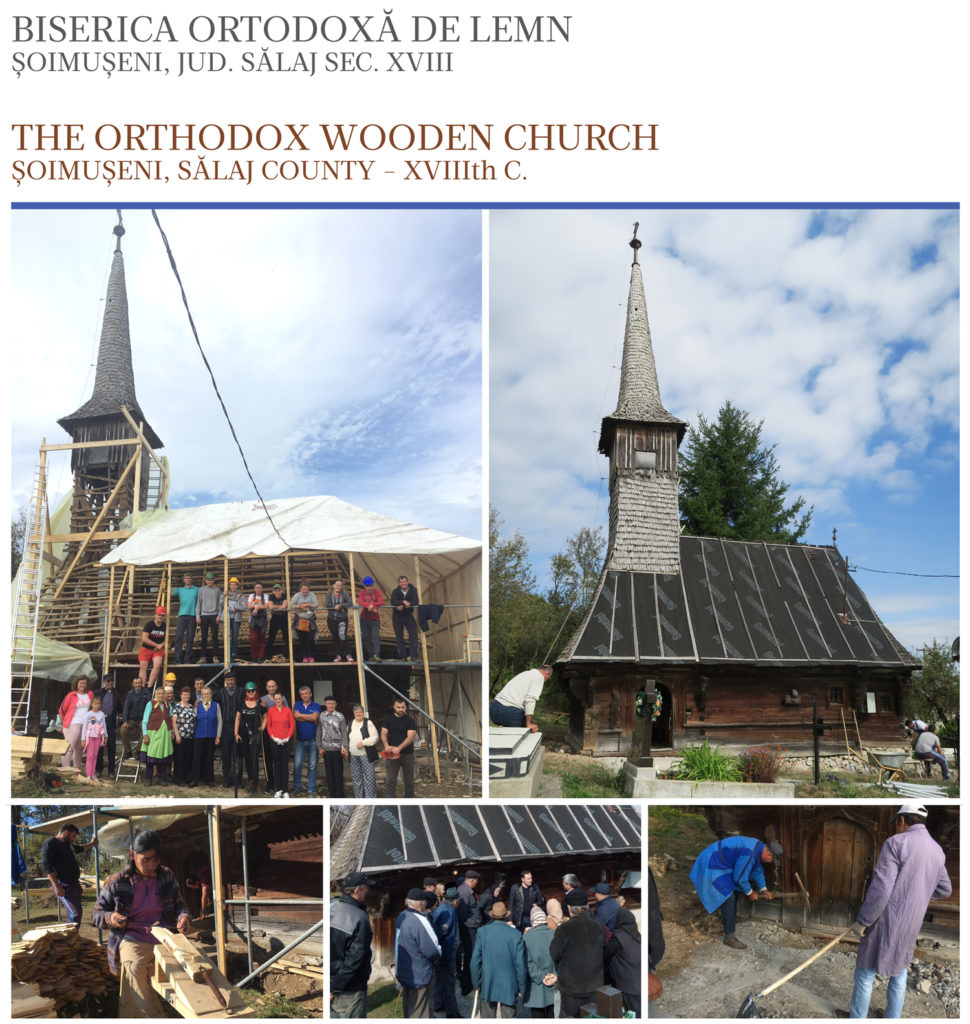
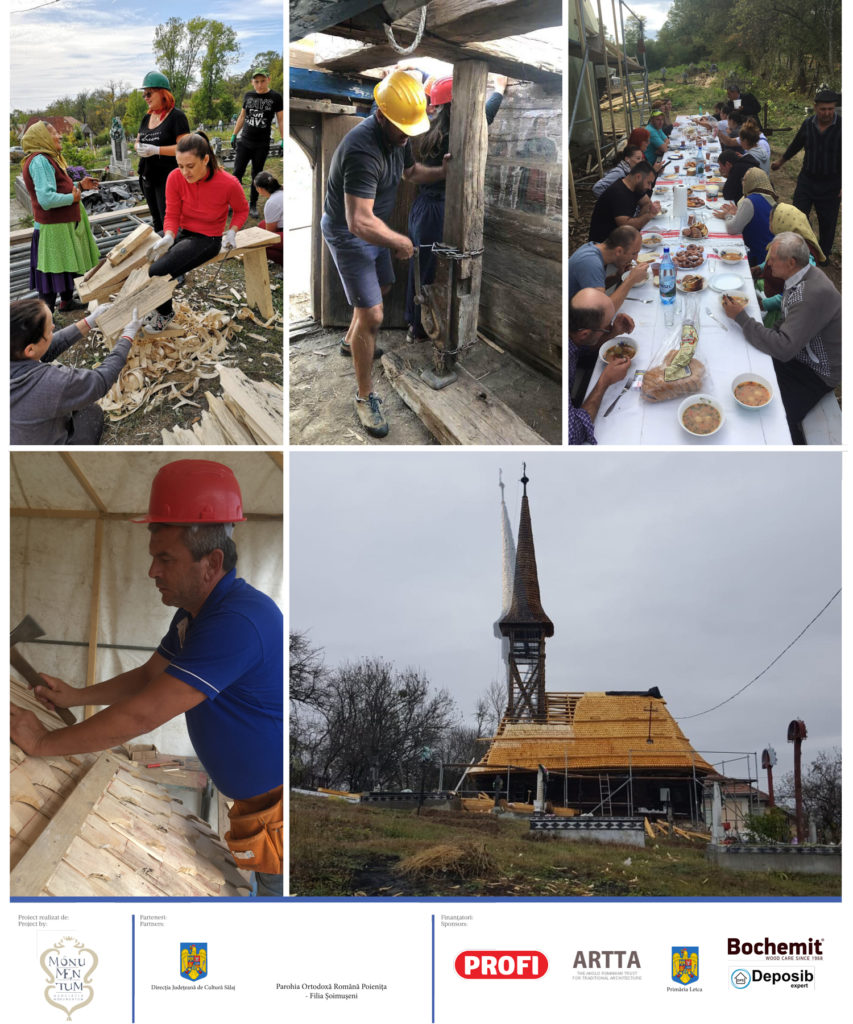
GENERAL PRESENTATION
The precise moment when the church was built is unknown; the list of historical monuments indicates the 16th century as the period of its erection. The
most important documentary sources show that in Șoimușeni, the church was erected before the year 1848. The local tradition notes that the church
was brought from Fericea, county of Maramureș, a village from the same Chioaru region, 2 villages away from Șoimușeni. To the extent to which this
tradition is based on real facts, most probably this event happened sometimes in the 3rd-4th decades of the 18th century.
THE STATE BEFORE THE INTERVENTION
The overall technical condition was extremely degraded for most elements and the tower was in a pre-collapse condition which needed an urgent
intervention to make it secure. The main problem with the narthex/nave and the altar was the existence of nodes/dislocated/broken elements caused
by the deformation of the church.
The deformation of the church (and leaning of the tower) are mainly caused by the absence of any foundation, which triggered the excessive compaction
of the narthex segment. The degradation of the roof and the absence of any maintenance works in the last decades have led to the surfacing of degraded
wood segments which need an intervention, too. The same type of intervention was also necessary for the biologically degraded float shoes. The roof
suffered an accelerated degradation which caused water infiltrations and thus endangered the roof structure and the mural painting. The laths were
undersized and largely affected by rottenness. The existing lightning rod was degraded and no longer functional.
SAFETY INTERVENTION PROPOSAL
The proposed intervention covered the structural and architectural rehabilitation. We propose interventions for the reconstruction of the foundations
and the rebuilding of the dry walls and the rehabilitation of the walls by replacing the degraded shoes and the joints between them, respectively the
broken blockages where needed. The intervention to the floors will be ones of rehabilitation/restoration; no strengthening works are proposed. The roof
structure will be consolidated and rehabilitated and the degraded segments will be sectioned-changed. The degraded shingle roof will be dismantled
and a new roof of the same material will be installed respecting the disposition, size, material and manufacturing technique of the existing one. A
lightning rod will also be installed.
ACCOMPLISHED INTERVENTIONS
The stone foundations of the south and east sides were redone, the degraded oak shoes were replaced and completed, one of the tower pillars that had
been struck by lightning was replaced, the tower was rotated and made vertical and a new roof was installed while preserving the historical laths.
Borza, Wooden Church
GENERAL PRESENTATION The wooden church from Borza, county of Sălaj dates from the year 1758. This was the first of the works made by the church builder Breaz Ion from Gilău. THE STATE BEFORE THE INTERVENTION The main objective was to support the local community to complete the works which were already started. The structure […]
Veronica
GENERAL PRESENTATION
The wooden church from Borza, county of Sălaj dates from the year 1758. This was the first of the works made by the church builder Breaz Ion from Gilău.
THE STATE BEFORE THE INTERVENTION
The main objective was to support the local community to complete the works which were already started. The structure of the laths and the roofing
were in an advanced state of degradation and needed an emergency intervention to make them safe.
SAFETY INTERVENTION PROPOSAL
The purpose of the intervention was to remove the damaged shingle roof from the tower and install a new roof from the same material in line with the
arrangement, dimension and manufacturing technique of the local practice.
ACCOMPLISHED INTERVENTIONS
During the intervention the tower roof shingles and the damaged laths were replaced. For the first row of the tower eaves and the first row of the second
slope of the roof, the shingles were installed in a triple layer.
